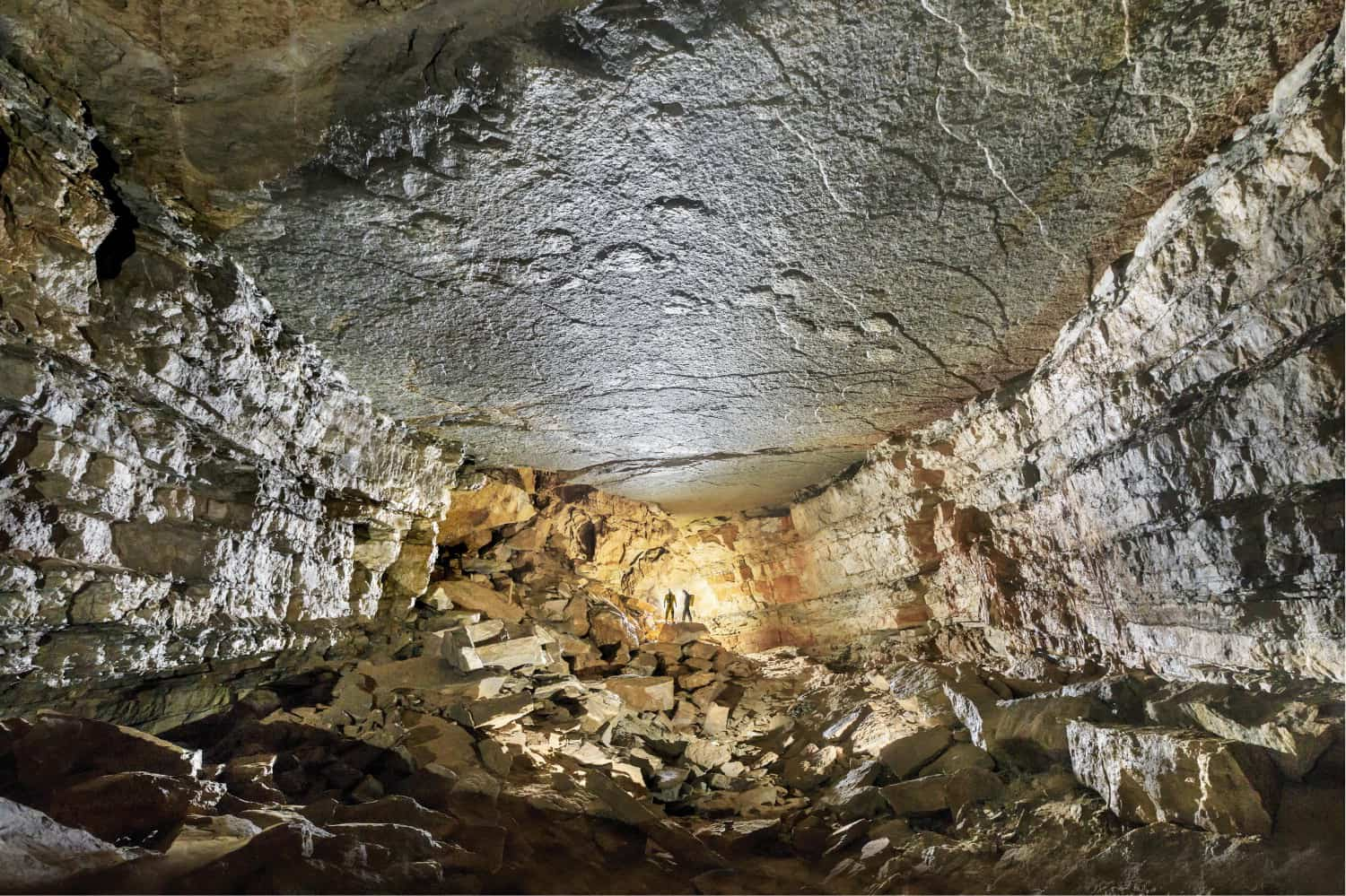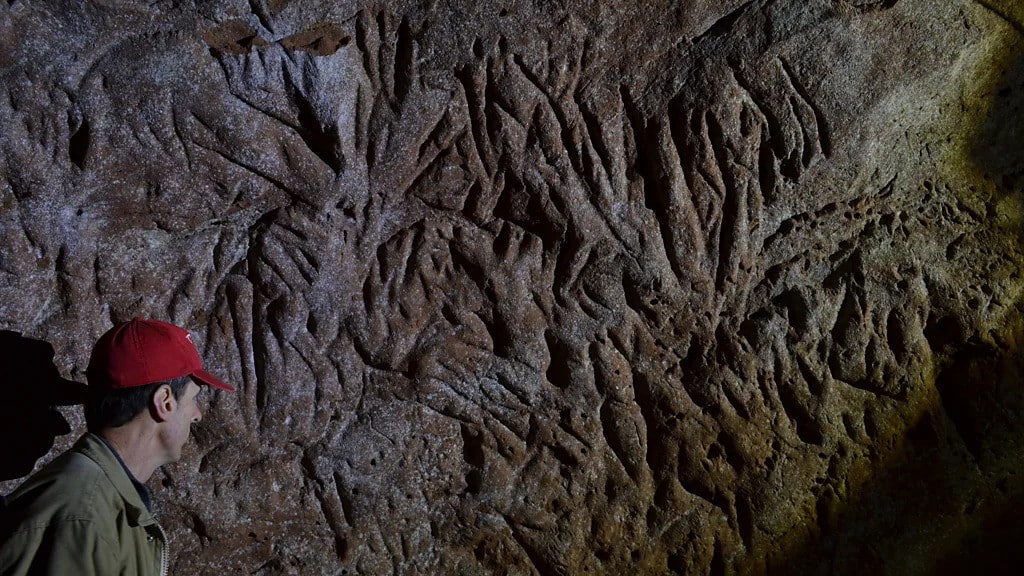
By Lindsay Kastroll, Master’s student in Biological Sciences, University of Alberta
Demystifying the way the science actually works…
In the last edition of Palaeo How-To, we discussed the different types of fossils and how they form. However, that edition focused specifically on body fossils, which are direct evidence of an organism represented by actual fossilized parts of that organism. Dinosaur bones, leaf impressions, and opalized leaves are all examples of body fossils. We deferred, however, the other major type of fossil: the trace fossil.
Trace fossils are indirect evidence of an organism’s existence: they are the marks that an organism left on the world, excluding the organism itself. In this way, trace fossils can be thought of as fossilized behaviour. Dinosaur footprints might be the first example that comes to mind, but footprints have been identified for tons of different animal groups, and in fact, there is a wealth of incredible, varied trace types beyond footprints.
To start you off with some examples, think about all the things you do that might leave traces aside from walking. When you swim in a river, your feet might leave swim traces any time they skim the bottom, just like a prehistoric turtle did near Red Willow Falls. If you take a rest on the beach, or fall in the mud, you might leave a resting trace where the soft sediment contoured around you. And, well, if you defecated in the woods, you would leave behind a trace that could fossilize. Fossilized feces are called coprolites.

Claw marks made by a large burrowing animal, likely a ground sloth or giant armadillo. This photo was taken inside the burrow, which is large enough for humans to walk through comfortably! Image by Heinrich Theodore Frank.
Soft-bodied organisms that do not fossilize well, like worms, are often only represented in the fossil record by the burrowing traces they leave behind. Burrows can also be much larger than worm-sized, of course: enormous tunnel-like burrows found in South America still show claw marks on the walls from the ground sloths or giant armadillos that dug them! Plant roots leave traces similar to burrows, too, as they forage through sediment in search of nutrients. The fossil record is also littered with traces left by organisms that bore into hard surfaces, like rock, bone, or shell. You might find traces boring without the trace makers’ body fossils, but there are a lot of really fascinating borings out there! Badum-tsh.
You might have noticed something interesting regarding borings: trace fossils can be left on body fossils! A common example is when an insect leaves a trace on a bone while acting as a decomposer. This blurring of the lines gets really interesting sometimes, such as in the case of scavenger bite marks. Depending on who you ask, scavenging marks could be considered trace fossils. Two of my colleagues have a long-running feud over whether the bite mark specialist among them should be considered a trace fossil specialist, since they’re conceptually the same as traces. She remains unconvinced.

Natural casts of sauropod dinosaur footprints found on the ceiling of a cave in France. The rock layer below, which would have included the molds of the footprints, has been eroded away by groundwater. Image by Rémi Flament.
Most trace fossils cannot permineralize like a body fossil can, because there’s no material to replace. Coprolites are the rare example that mineralizes in a similar way to a typical body fossil, but how do other trace fossils form? Since most trace fossils are impressions or excavations of sediment, all it takes is for the sediment to solidify into sedimentary rock after an extended time buried beneath the earth’s surface. Because a trace is a three-dimensional structure, it often fills with more sediment, which also hardens into sedimentary rock. The original depression is called a natural mold; the infill is a cast. We don’t usually find both cast and mold; instead, we stumble across them after the one made of softer rock has eroded away. This is why you might have seen dinosaur footprints as either molds or casts. The surviving version is the harder one, which did not succumb to erosion.
The eternal struggle with trace fossils is determining which organism left a particular trace. If you find a hole in the ground on your walk to work, how do you know what dug it? If multiple species dig similar burrows, how do you tell them apart? Fortunately, sometimes a fossil comes along that serves as a proverbial “smoking gun.” For instance, if a burrowing animal fossilizes inside a burrow, then it’s easy to argue that it also made the burrow. Or very rarely, you might find a “mortichnia,” which forms when an organism dies immediately after leaving footprints and fossilizes alongside them.

This “mortichnia” fossil shows the final steps of a prehistoric horseshoe crab from Germany called Mesolimulus. The horseshoe crab itself is a body fossil, but its footprints are trace fossils in the form of natural molds. Image by Ghedoghedo on Wikipedia.
This uncertainty about trace makers makes traces difficult to study, but this branch of science nevertheless has its own fancy name: ichnology, because the technical term for trace fossils is ichnofossils. Palaeoichnologists use a hierarchical system for organizing and naming trace types, inspired by the way species are organized, to standardize the study of ichnofossils. This way, even though the identity of a trace maker might never be known, palaeoichnologists can still study and discuss fossilized behaviour using ichnogenera and ichnospecies. One of the more well-known ichnospecies is Eubrontes giganteus, a three-toed dinosaur footprint attributed to something like a Dilophosaurus or Coelophysis.
Ichnofossils can teach us a lot about prehistoric ecosystems that body fossils simply can’t. A coprolite containing chunks of bone implies that the organism it came from had robust, bone-crunching jaws like a Tyrannosaurus, but didn’t digest those bones completely. Invertebrate borings on a Protoceratops skeleton demonstrate what happened to the animal’s body after death, including which areas of the skeleton the insects preferred to target. The distance between footprints in a trackway allows for the estimation of travel speed, and social behaviour can be implied by the presence of multiple individuals’ prints.
An additional feature of ichnofossils that is often overlooked is their usefulness as index fossils. Index fossils are fossils that are geographically widespread, easily recognizable, and limited to rocks of a specific age. They help palaeontologists by showing with relative certainty how old the rocks that they’re looking at are, which is very important in dating other fossils of interest. The next time you see Palaeo How-To, we will build on this knowledge and finally talk about how fossils are found. How do palaeontologists know where to look? Why are complete skeletons so rare? What is a bonebed? If you have any additional questions, make sure to email us so that you can see them answered!
✏ Email your Palaeo questions to info@dinomuseum.ca! ✏
